Exclusive 2019 Update: VICTORY AT THE VA – West LA Veterans Administration master plan protects old nuclear dump from development
(Click thumbnail to view entire photograph)
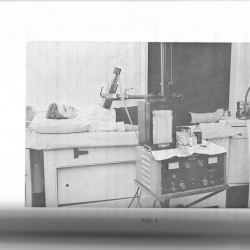 “More than 100 patients and several hundred rabbits” were injected with I-131 in this 1957 experiment. Results were compared on a rabbit vs. human chart. “The patient remained in a reclining position for the duration of the test (60-90 minutes).”
“More than 100 patients and several hundred rabbits” were injected with I-131 in this 1957 experiment. Results were compared on a rabbit vs. human chart. “The patient remained in a reclining position for the duration of the test (60-90 minutes).”
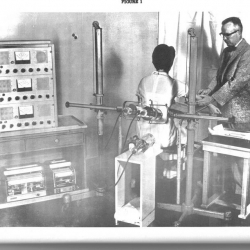 This 1962 experiment involving humans and radioiodine was called “Why ‘Radioisotopes’ in the diagnosis of renal hypertension.” Note two radiation detectors, one aimed at this woman’s kidney.
This 1962 experiment involving humans and radioiodine was called “Why ‘Radioisotopes’ in the diagnosis of renal hypertension.” Note two radiation detectors, one aimed at this woman’s kidney.
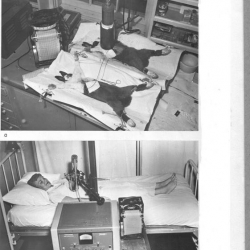 A UCLA/VA experiment in 1954 showing test subjects minutes after injection of radioiodine, or I-131. 200 rabbits and 60 people participated with researchers determining that a fifth of the dose was sufficient – after the fact. “Several patients have been tested repeatedly without detectable ill effects.”
A UCLA/VA experiment in 1954 showing test subjects minutes after injection of radioiodine, or I-131. 200 rabbits and 60 people participated with researchers determining that a fifth of the dose was sufficient – after the fact. “Several patients have been tested repeatedly without detectable ill effects.”
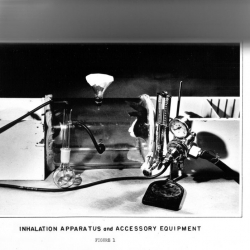 Radionuclide inhalation chamber used on small animals including lab favorites Dutch rabbits in 1952.
Radionuclide inhalation chamber used on small animals including lab favorites Dutch rabbits in 1952.
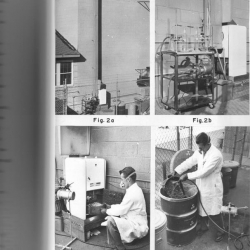 The UCLA “Burn-All” unit reduced radioactive waste 99% by weight and volume and cost less than a dollar a month to operate in 1956. ‘Hot’ ashes were mixed in with cement powder in drums and dumped off the Channel Island in mile-deep waters where they are still corroding and leaking today.
The UCLA “Burn-All” unit reduced radioactive waste 99% by weight and volume and cost less than a dollar a month to operate in 1956. ‘Hot’ ashes were mixed in with cement powder in drums and dumped off the Channel Island in mile-deep waters where they are still corroding and leaking today.
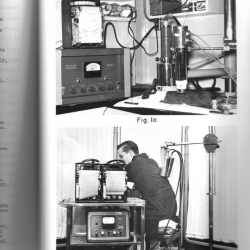 1956 UCLA/VA experiment with radioiodine, a ferocious gamma emitter with a half life of around eight days. Patients ingesting I-131 were often so ‘hot’ that they were dangerous to be around even for hospital staff.
1956 UCLA/VA experiment with radioiodine, a ferocious gamma emitter with a half life of around eight days. Patients ingesting I-131 were often so ‘hot’ that they were dangerous to be around even for hospital staff.
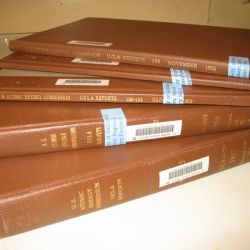 AEC reports
AEC reports
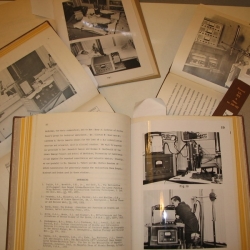 UCLA human experimentation
UCLA human experimentation
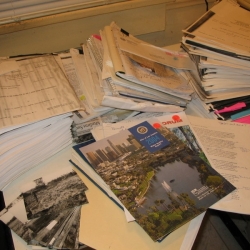 VA nuclear dump in-depth investigation
VA nuclear dump in-depth investigation
Exclusive 2019 Update: VICTORY AT THE VA – West LA Veterans Administration master plan protects old nuclear dump from development
 A UCLA/VA experiment in 1954 showing test subjects minutes after injection of radioiodine, or I-131. 200 rabbits and 60 people participated with researchers determining that a fifth of the dose was sufficient – after the fact. “Several patients have been tested repeatedly without detectable ill effects.”
A UCLA/VA experiment in 1954 showing test subjects minutes after injection of radioiodine, or I-131. 200 rabbits and 60 people participated with researchers determining that a fifth of the dose was sufficient – after the fact. “Several patients have been tested repeatedly without detectable ill effects.”




















Recent Comments